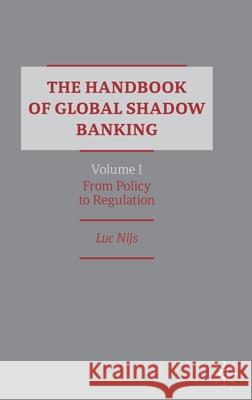The Handbook of Global Shadow Banking, Volume I: From Policy to Regulation » książka
topmenu
The Handbook of Global Shadow Banking, Volume I: From Policy to Regulation
ISBN-13: 9783030347420 / Angielski / Twarda / 2020 / 800 str.
The Handbook of Global Shadow Banking, Volume I: From Policy to Regulation
ISBN-13: 9783030347420 / Angielski / Twarda / 2020 / 800 str.
cena 523,30
(netto: 498,38 VAT: 5%)
Najniższa cena z 30 dni: 501,19
(netto: 498,38 VAT: 5%)
Najniższa cena z 30 dni: 501,19
Termin realizacji zamówienia:
ok. 22 dni roboczych.
ok. 22 dni roboczych.
Darmowa dostawa!
Kategorie:
Kategorie BISAC:
Wydawca:
Palgrave MacMillan
Język:
Angielski
ISBN-13:
9783030347420
Rok wydania:
2020
Wydanie:
2020
Ilość stron:
800
Waga:
1.31 kg
Wymiary:
23.39 x 15.6 x 4.45
Oprawa:
Twarda
Wolumenów:
01
Dodatkowe informacje:
Wydanie ilustrowane











